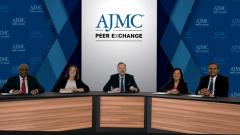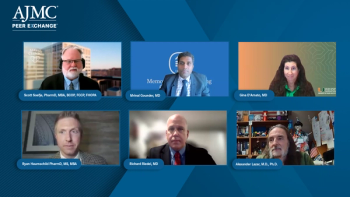
Selecting Optimal First-line Therapy for Patients Diagnosed with Heart Failure
Utilization of the four pillars in heart failure therapy are highlighted as aggressive first-line treatment strategies.
Episodes in this series

This is a video synopsis/summary of a panel discussion involving Robert Groves, MD; Eugene E. Wright Jr, MD; Nancy Albert, PhD; Nihar Desai, MD, MPH; and Kelly Marie Axsom, MD. The panel discusses treatment approaches for midrange ejection fraction heart failure with reduced ejection fraction (HFrEF). Albert notes there is no single approach; it depends on the individual patient. However, evidence supports, in some patients, starting all 4 pillar medications (angiotensin receptor-neprilysin inhibitors [ARNIs], angiotensin-converting enzyme [ACE] inhibitors or angiotensin receptor blockers [ARBs]; evidence-based beta blockers [metoprolol succinate, bisoprolol, carvedilol]; mineralocorticoid receptor antagonists [MRAs; spironolactone, eplerenone]; and sodium-glucose cotransporter-2 [SGLT2] inhibitors [dapagliflozin, empagliflozin]) within 2 weeks and optimizing doses within 1 month. Monitoring kidney function, potassium, and sodium guides safe intensification. The approach should be urgent, avoiding a “stable” mindset. Desai emphasizes the mortality benefits of quadruple therapy in HFrEF, yet real-world data shows only 1% of heart failure (HF) patients receive guideline-directed triple therapy. Like cancer, HF requires rapid multidrug therapy, not an incremental “start low, go slow” approach. The stakes are high to close evidence-practice gaps. Axsom draws an analogy to cancer and HF both being chronic life-threatening diseases demanding rapid treatment. Wright notes the multidirectional relationship between conditions like HF, kidney disease, and diabetes, requiring combined management.
Video synopsis is AI-generated and reviewed by AJMC editorial staff.
Newsletter
Stay ahead of policy, cost, and value—subscribe to AJMC for expert insights at the intersection of clinical care and health economics.







































